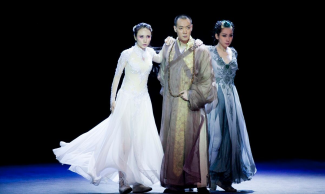
Mapping China: Performing Arts - Theatre
Mapping China: Performing Arts - Theatre
Brief Historical Overview of Spoken-word Drama in China
China has a long history of theatrical art forms encompassing myriad genres. Peking Opera is considered the country’s national opera. More than 300 regional opera forms exist across the country. Kun Opera (kunqu) is the oldest and now inscribed on UNESCO’s list of “intangible cultural heritage of humanity.”
The Spring Willow Society founded in Tokyo c. 1906-07 by Li Shutong and other overseas Chinese students is often considered the beginning of modern Chinese text-based “spoken” drama, in contrast with the traditional opera forms which were sung. One survey shows that most of the foreign plays staged in China between 1950 and 1964 were written by dramatists from the former Soviet Union. The 1950s also saw performances of classical plays by Shakespeare, Carlo Goldoni, Pierre Beaumarchais, Moliere, and Friedrich von Schiller. During this period, the staging of two modern western plays had particular impact: Henrik Ibsen’s A Doll’s House in 1956 and Bertolt Brecht’s Mother Courage in 1959. The revival of Uncle Tom’s Cabin renamed Sorrows of the Black Slave was staged by the Experimental Theatre of the Central Academy of Drama in 1961.
Throughout the 1980s, a wide range of styles emerged, including those influenced by Western models such as Brecht, Artaud, Meyerhold, and the Theatre of the Absurd. The 1980s also saw revivals of traditional performing traditions that had been suppressed during the Cultural Revolution, including Chinese opera genres, puppet theatre, folk arts, etc.
2007 marked the centennial of modern text-based theatre in China. Many performances honoring the occasion were staged by government troupes including Beijing People’s Art Theatre, National Theatre Company of China, and others. Leading directors with the government troupes such as Meng Jinghui (National Theatre Company of China) and Lin Zhaohua (Beijing People’s Art Theatre) have been actively staging productions independent of their positions within the government troupes, to great acclaim.
In addition to government troupes, the 2000s have seen a rise in independent theatre groups as well as project-based theatre performances staged throughout the country. Theatre festivals regularly arise in cities including Chongqing, Chengdu and others, though often there is only ever a “First Annual” and never a second or more.
The largest challenge most artists in China’s theatre realm continue to bemoan is the lack of high quality original scripts / new texts.


